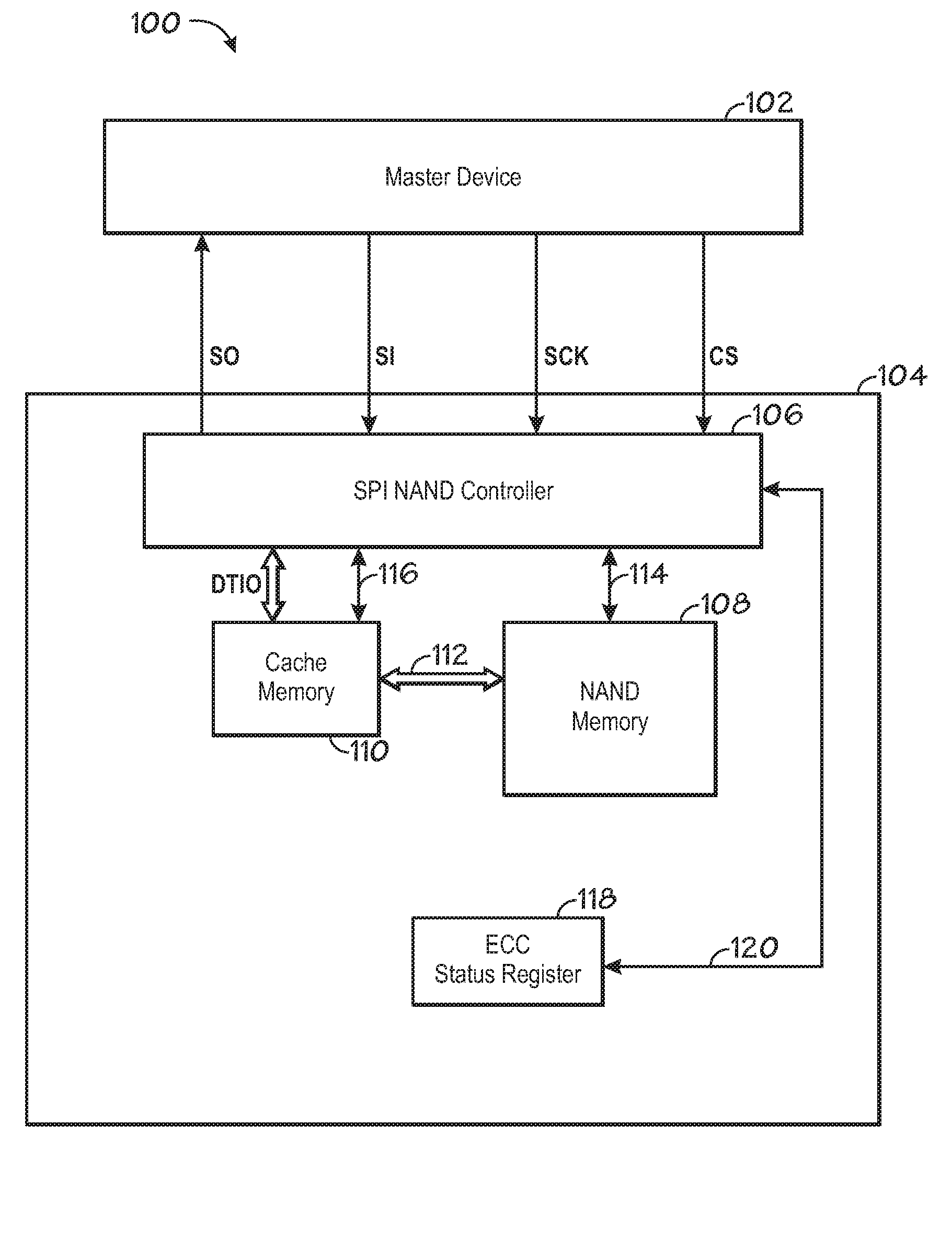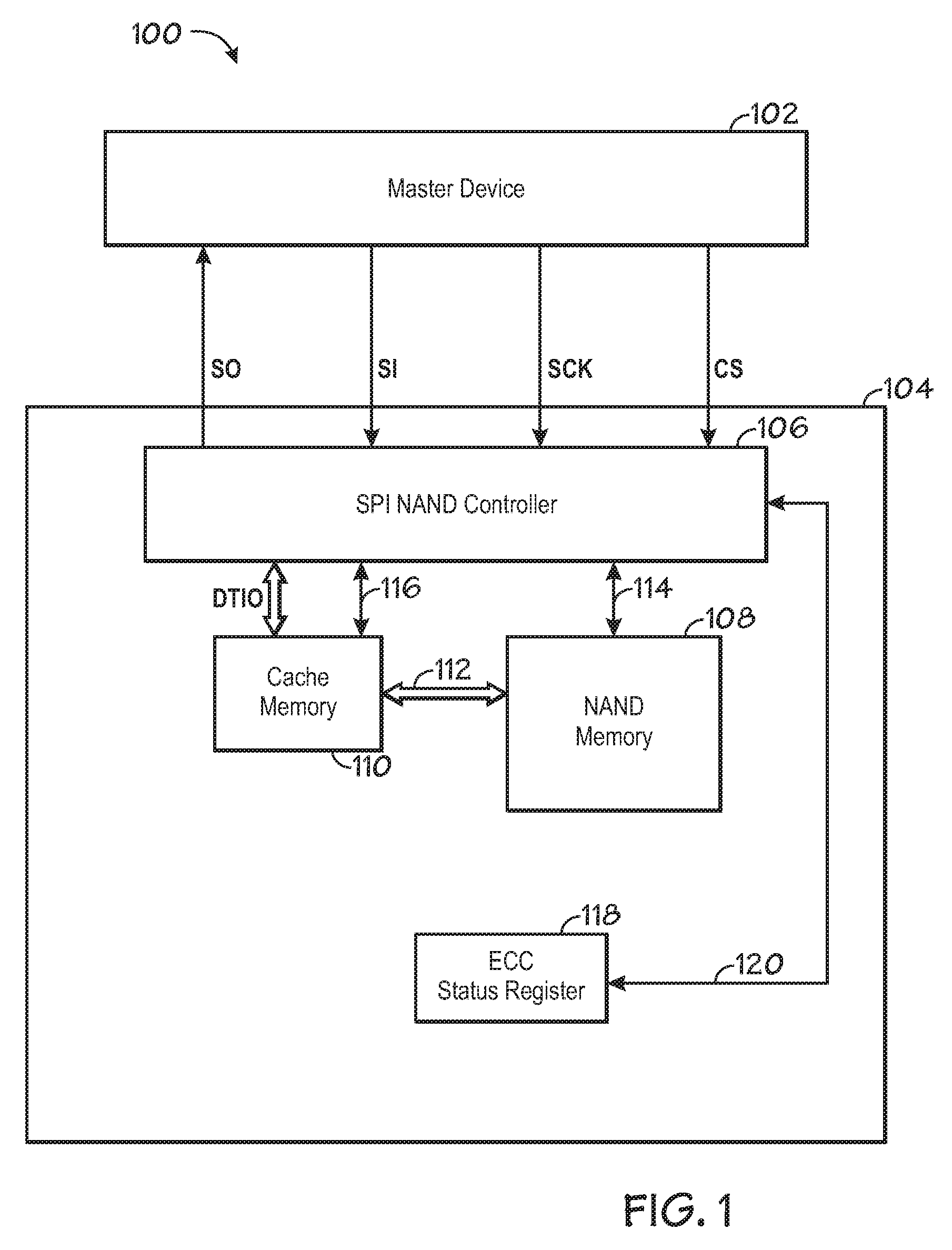System and method for data read of a synchronous serial interface NAND
a serial interface and data read technology, applied in the field of serial peripheral interfaces, can solve the problems of long erase and write time, no flash memory, and the nand flash memory typically requires some error detection and correction capabilities
- Summary
- Abstract
- Description
- Claims
- Application Information
AI Technical Summary
Benefits of technology
Problems solved by technology
Method used
Image
Examples
second embodiment
[0030]In FIG. 3, a flow chart illustrating the page read process 300 undertaken by the master device 102 to transmit a page read command to the slave device 104. At step 302, the CS is set to low by the master device 102, thus selecting the slave device 104 for information transmittal. In step 304, the master device 102 transmits a page read command to the slave device 104 on the SI line. The page read command operates to initialize the slave device 104 for a data read mode. Next, in step 306, the master device 102 transmits a page address to the slave device 104 across the SI line. In one embodiment, dummy bits may be transmitted as a header to the address transmitted to allow for proper byte alignment. For example, if a 17 bit row address is being transmitted, then a 7 dummy bit header may be transmitted so that the entire address length conforms to the slave device data input length requirements. Once the page address is transmitted, the master device 102 sets the CS value to hig...
third embodiment
[0036]In step 506, the SPI NAND controller 106 checks the data read in step 502 by implementing an error detection process. The error detection process uses the redundancy bits corresponding to the data in detecting any errors in the data. If any errors are found, then they are corrected in step 508 using the ECC process. In one embodiment, the error detection and correction techniques make use of linear block encoding and decoding. A further embodiment utilizes specialized subclasses of binary BCH codes, such as Hamming codes to perform the error detection and correction. A third embodiment utilizes nonbinary BCH codes, such as Reed-Solomon codes to perform the error detection and correction of the data. Upon completion of steps 506 and 508, the data is sent across access line 116.
[0037]In step 510, the ECC result register 118 is updated. Preferably, the ECC status register 118 includes sub-registers used to store error detection and correction result information. In one embodiment...
PUM
 Login to View More
Login to View More Abstract
Description
Claims
Application Information
 Login to View More
Login to View More - R&D
- Intellectual Property
- Life Sciences
- Materials
- Tech Scout
- Unparalleled Data Quality
- Higher Quality Content
- 60% Fewer Hallucinations
Browse by: Latest US Patents, China's latest patents, Technical Efficacy Thesaurus, Application Domain, Technology Topic, Popular Technical Reports.
© 2025 PatSnap. All rights reserved.Legal|Privacy policy|Modern Slavery Act Transparency Statement|Sitemap|About US| Contact US: help@patsnap.com



